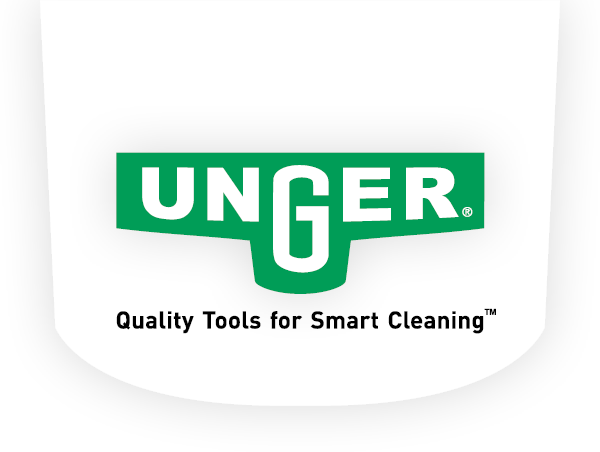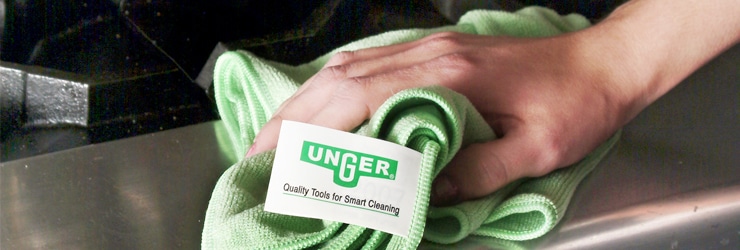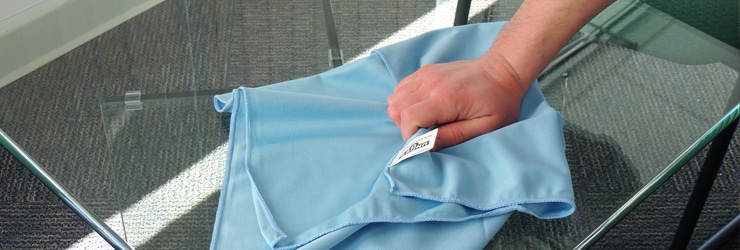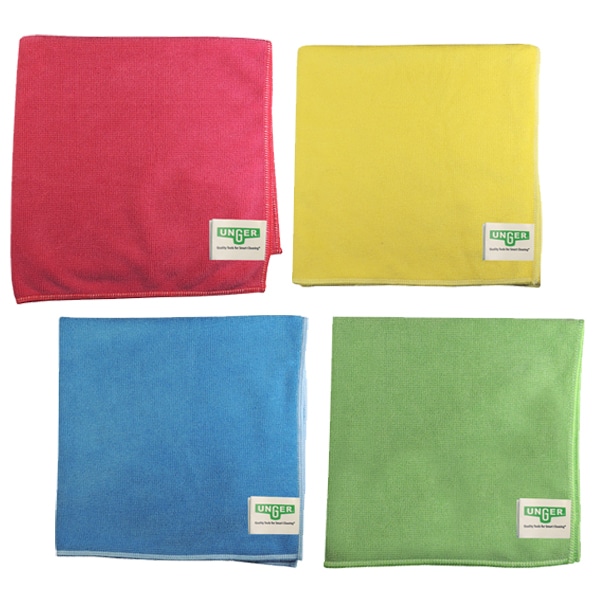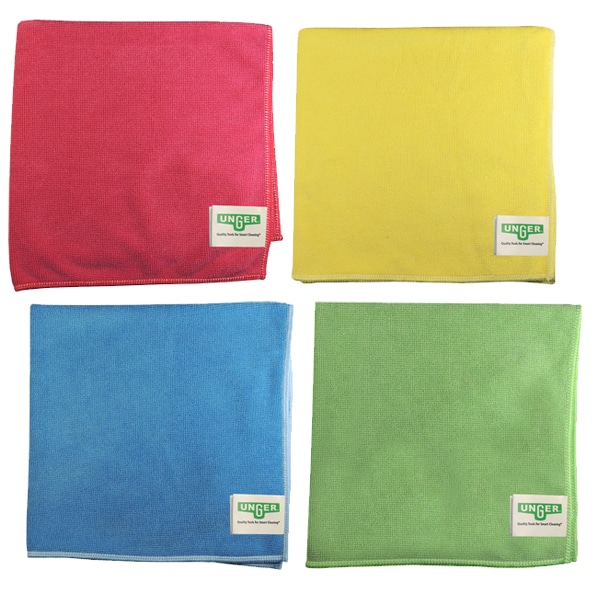MicroWipe™ Microfiber Cloths
More Than Ever, You Must Truly Clean With The Right Tools
The CDC recommends performing routine environmental cleaning during virus outbreaks which includes cleaning high touch surfaces such as doorknobs and countertops. Unger has an assortment of tools for your cleaning needs during heightened cold and flu season. Unger tools are designed with efficiency in mind, allowing you to clean faster and better.
What is Microfiber?
Simply put, microfiber is one of the most important developments in cleaning technology in years. Microfiber cloths can help you lower the risk associated with harmful contaminants, improve your facility’s image at the lowest possible cost and reduce occupant complaints.
As the name states, fibers are repeatedly split in the manufacturing process to make microfibers. Microfibers are knitted into a soft, reusable cleaning cloth that is 30 times finer than cotton. The microfiber’s cleaning surface is packed with filaments that trap soil, remove bacteria and absorb moisture for streak-free cleaning.
Why a Grading System?
The range of cleaning products that microfiber may be used for is dictated by many qualities, including fiber thickness, length, finishing, abrasiveness, absorbency, cloth dimension, edging and quality manufacturing techniques.
Unger has established several performance factors that have been tested, measured and validated by ASTM independent laboratories and other US standard industry tests. This criteria is designed to assist end users in the selection process when purchasing microfiber cloths.
The Unger grading system has been established for new and existing customers of microfiber cloths to measure the difference in textile quality, durability, construction characteristics and cleaning performance before making an investment in quality cleaning tools. It also allows consumers to compare the many different types of microfiber cloths on the market today and select a cloth that is best suited for the unique requirements of their facility.
Why MicroWipes are Better Cleaning Tools
Laboratory tests show that microfibers reduce surface debris and lower bacteria levels by over 96%. Mold, bacteria and soil are removed and captured thanks to its unique construction.
Less Environmental Impact
The US Green Building Council specifies microfiber products as part of their standards because they conserve water, reduce the use of disposable products and require fewer harsh chemicals.
Unger's SmartColor System
Unger's MicroWipes are part of our SmartColor Cleaning System that combines superior technology with the productivity and sanitation benefits of visual coding. Workers can use red MicroWipes in the restroom, green in the kitchen and food service areas, yellow in specialty areas and blue for general and light office cleaning- cleaning managers can customize a color code system for the unique needs of their facility. The color coding system reduces cross-contamination, improves performance and leads to cleaner facilities.
Microfiber Washing Instructions
- Water Temperature- Wash the microfiber cloth in water no warmer than 200 degrees (95 celcius).
- Drying- Tumble dry the microfiber cloth in low heat.
- Ironing- DO NOT iron the microfiber cloth. The heat will melt the fabric and make the cloth unusable.
- Bleaching- No bleach should be used including detergents with bleach or fabric softener.
